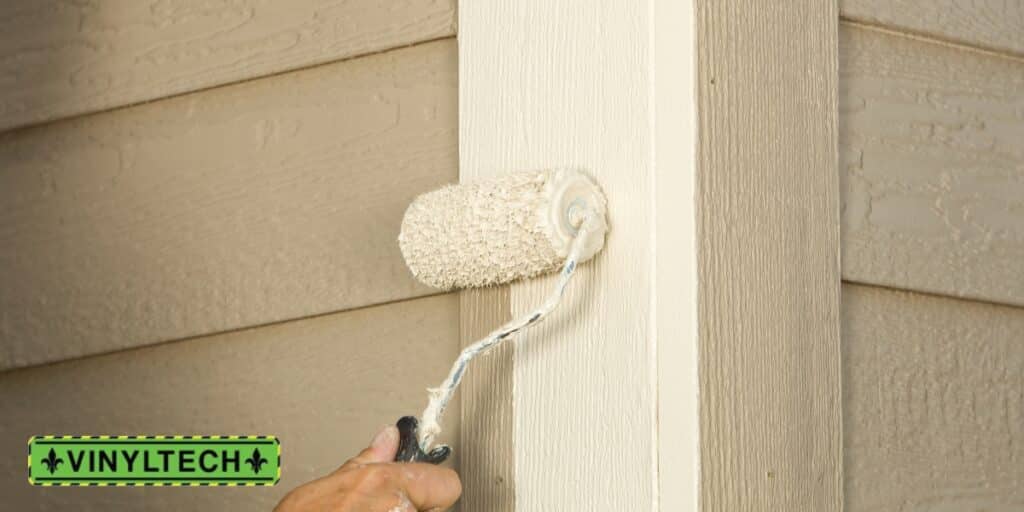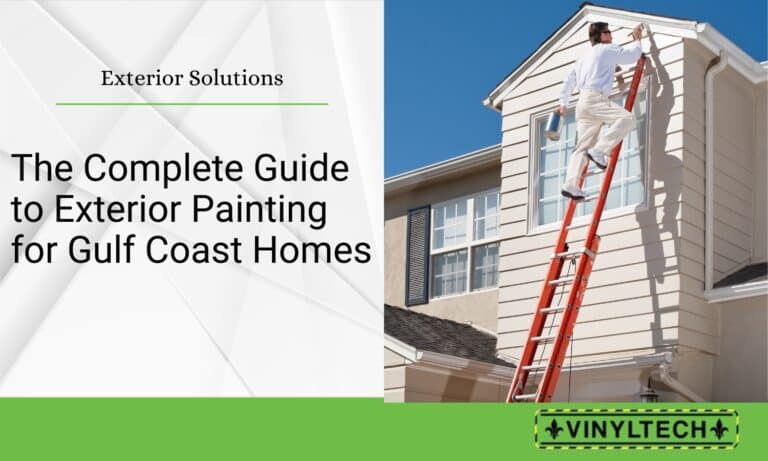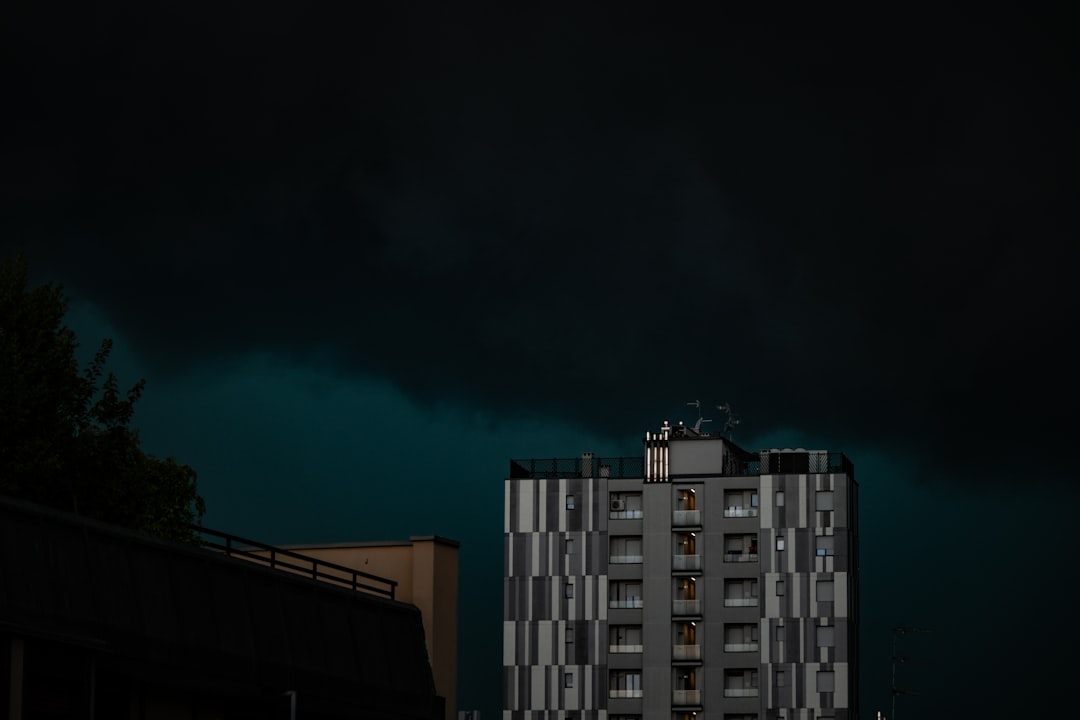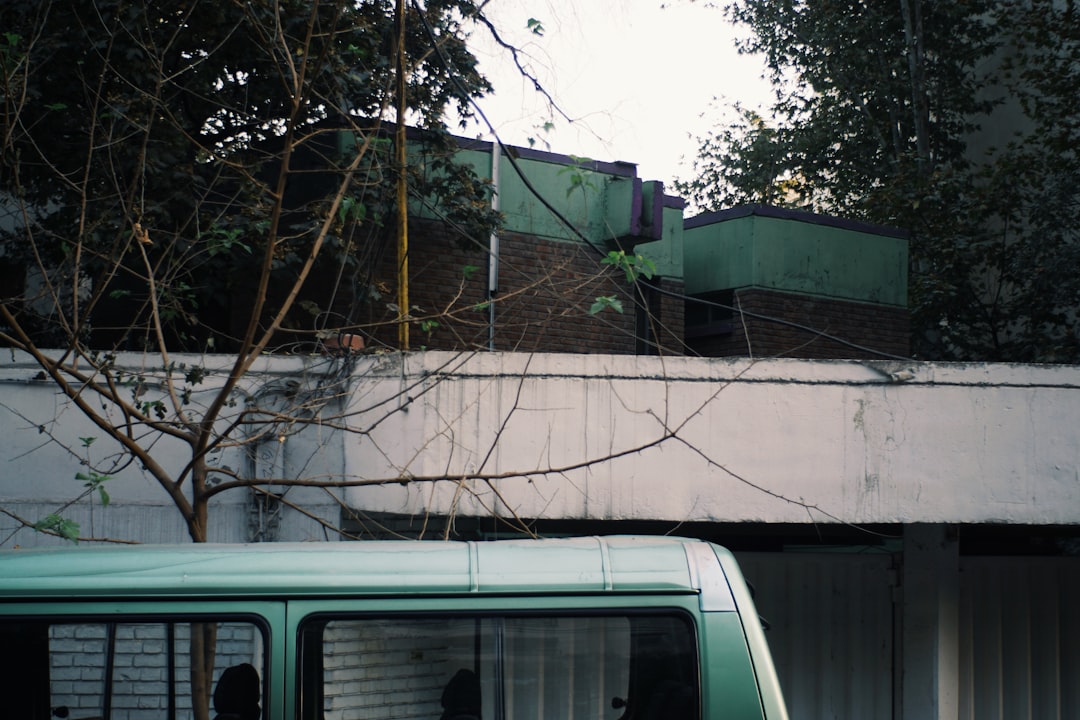When salt-laden winds and afternoon thunderstorms are part of your daily forecast, exterior painting isn’t just about curb appeal but a critical shield for your home’s structure. Gulf Coast homes take a beating from nature’s cocktail of humidity, UV radiation, and salt spray that can turn a fresh paint job into a peeling, faded disappointment within just a couple of years.
At Vinyltech, we’ve spent over two decades watching paint fail and succeed along the coastline from Lake Charles to Tallahassee. The difference between a five-year paint job and a fifteen-year masterpiece isn’t luck—it’s science and technique.
This guide cuts through the marketing hype to give facts about what works in our unique coastal environment. You’ll learn which modern paint formulations stand up to our punishing conditions, how preparation makes or breaks longevity, and the application secrets professionals don’t usually share outside the trade.
Whether you tackle the project yourself or hire it out, understanding these Gulf Coast-specific principles will save you thousands in premature repainting costs and protect your most significant investment from our beautiful but challenging coastal climate.
Why Exterior Painting is Essential for Gulf Coast Homes
Homes in the Gulf Coast region face some of the most challenging weather conditions in the country. High humidity, salt air, intense sun exposure, and severe storms can significantly impact a home’s exterior, causing premature paint failure if the proper precautions aren’t taken.
How the Gulf Coast Climate Affects Home Exteriors
Humidity and Rain Damage: Constant exposure to moisture creates the perfect conditions for mold, mildew, and rot, which can lead to peeling and bubbling paint. If the surface isn’t adequately prepared with moisture-resistant paint, Louisiana, Florida, and Alabama homes can experience rapid paint deterioration.
Intense Sun and UV Rays: Direct sunlight and high UV exposure cause paint to fade, weaken, and crack over time. Darker colors absorb more heat, which can accelerate deterioration. UV-resistant, reflective paints help preserve exterior colors’ vibrancy while preventing heat-related damage.
Coastal Salt Air and Corrosion: Homes closer to the coast are constantly exposed to salt air, which can break down paint coatings and lead to corrosion, especially on metal surfaces. Salt-resistant paints and coatings are necessary to protect exteriors from the long-term effects of coastal weather.
Hurricane-Force Winds and Storms: The Gulf Coast is known for severe storms, hurricanes, and high winds, which can cause structural damage and expose a home’s exterior to excessive moisture. A strong, durable weatherproof paint acts as a shield, preventing water from seeping into cracks and damaging the siding or foundation.
The Benefits of Proper Exterior Painting
Investing in high-quality exterior painting improves a home’s appearance while also protecting it from the Gulf Coast’s extreme weather conditions:
Enhances Curb Appeal and Home Value: A fresh coat of paint instantly revitalizes a home’s exterior, making it look newer and well-maintained. Whether you plan to sell or want to boost your property’s curb appeal, professionally applied paint can increase resale value.
Provides a Protective Barrier Against the Elements: Properly applied weather-resistant paint prevents water intrusion, mold growth, and UV damage, ensuring long-term protection for wood, stucco, and siding materials.
Extends the Lifespan of Siding, Stucco, and Wood: A home’s exterior takes a beating over time, but a high-quality paint job helps to preserve materials, reducing the need for costly repairs or premature replacements.
Reduces Maintenance Costs Over Time: Choosing premium exterior paint means fewer touch-ups, a longer-lasting color, and better resistance to peeling, cracking, or fading. This means less maintenance and fewer repainting cycles, ultimately saving homeowners money.
Choosing the Right Exterior Paint for Gulf Coast Homes
Selecting the right exterior paint is the key to ensuring your home meets Gulf Coast weather conditions. Not all paints are created equal, and using the wrong type can lead to early fading, cracking, or peeling. Let’s break down the best home options in humid, coastal climates.
The Best Types of Paint for Humid and Coastal Climates
100% Acrylic Latex Paint – The All-Around Best Choice
Acrylic latex is one of the most widely recommended paints for Gulf Coast homes because it is:
- Highly durable – Expands and contracts with the weather, preventing cracks.
- Moisture-resistant – Resists mold and mildew growth in humid conditions.
- Fade-resistant – Holds up against intense UV exposure from the sun.
- Easy to clean – Withstands rain, dirt, and salt air with minimal maintenance.
This type of paint works well on stucco, wood, and fiber cement siding, making it a popular choice for homeowners seeking long-lasting protection.
Elastomeric Coatings – Maximum Protection Against Moisture
Elastomeric coatings provide superior waterproofing for homeowners dealing with frequent rain, flooding, or storm exposure. These paints are:
- Thicker than standard paints – Creates a flexible, rubber-like barrier.
- Ideal for stucco & masonry – Seals cracks and prevents water intrusion.
- Mold and mildew resistant – Perfect for humid and rainy climates.
While elastomeric coatings offer unmatched moisture defense, they are more expensive and require expert application for the best results.
UV-Resistant & Reflective Paints – Built for Intense Sun Exposure
The Gulf Coast’s relentless sun can cause exterior paint to fade quickly, making UV-resistant coatings a smart choice. These paints:
- Prevent color fading – Maintain a vibrant, fresh look for years.
- Reduce heat absorption – Keeps home interiors cooler, lowering energy costs.
- Offer long-term durability – Protects against cracking and blistering from heat.
Homeowners in coastal or southern-facing properties benefit the most from UV-resistant or reflective paint to combat sun-related damage.
How Paint Quality Impacts Longevity
Choosing the cheapest paint may save money upfront, but low-quality formulas break down faster, leading to frequent repainting and higher costs in the long run. Let’s compare the difference between budget vs. premium exterior paints.
| Feature | Budget Exterior Paint | Premium Exterior Paint |
|---|---|---|
| Durability | 3-5 years before fading or peeling | 10-15+ years of lasting color & protection |
| Moisture Resistance | Limited resistance to humidity | Superior mold & mildew resistance |
| UV Protection | Prone to fading in direct sunlight | Fade-resistant technology for longer vibrancy |
| Cost Over Time | Requires frequent repainting | Saves money with longer-lasting performance |
What’s the Best Exterior Paint for Your Gulf Coast Home?
The right choice depends on your home’s location, sun exposure, and moisture levels:
- For all-around durability: Choose 100% acrylic latex paint.
- For coastal or high-rain areas: Use elastomeric coatings.
- For homes with full sun exposure: Pick UV-resistant and reflective paints.
At Vinyltech, we help Gulf Coast homeowners select the ideal paint formulation based on location, home construction, and environmental factors.
Prepping Your Home for Exterior Painting
A successful exterior painting job starts long before the first brushstroke. Proper surface preparation ensures that the paint adheres correctly, lasts longer, and provides maximum protection against Gulf Coast weather. Skipping these steps can lead to premature peeling, cracking, and uneven coverage, making your home vulnerable to moisture and sun damage.
Why Surface Preparation is Critical in the Gulf Coast
Homes in humid and coastal climates experience more buildup of dirt, mold, and old, flaking paint, which can prevent new paint from properly bonding to the surface. Without proper preparation:
- Paint won’t stick – Dirty or damaged surfaces prevent adhesion.
- Moisture gets trapped – Leading to bubbling and peeling.
- Cracks and gaps remain exposed – Allowing water intrusion and further deterioration.
- The final finish looks uneven – Resulting in poor curb appeal and lower durability.
Thorough cleaning, repair, and priming before painting begins are key to a long-lasting, professional-looking exterior paint job.
Steps to Prep Your Home for a Long-Lasting Paint Job
1. Power Washing to Remove Dirt and Mildew
Before painting, the entire surface must be clean and free of debris. Power washing removes:
- Dirt and dust buildup from siding and trim.
- Mold and mildew that thrive in humid Gulf Coast conditions.
- Salt and pollutants common in coastal areas.
💡 Pro Tip: Let the house dry completely for 24-48 hours before moving on to the next step.
2. Scraping and Sanding Peeling or Cracked Paint
Old, flaking paint must be removed to prevent new paint from lifting.
- Use a paint scraper to remove loose or peeling areas.
- Sand the edges of scraped sections for a smooth transition.
- Feather the surface to blend exposed areas with surrounding paint.
💡 Pro Tip: Check for lead-based paint before scraping if your home was built before 1978. Vinyltech’s professionals are certified in lead-safe practices.
3. Repairing Surface Imperfections
Cracks, holes, and gaps must be sealed to prevent moisture intrusion and ensure a smooth finish.
- Caulk gaps around windows, doors, and trim.
- Patch holes in stucco, brick, or wood with appropriate fillers.
- Replace damaged siding or trim before painting.
💡 Pro Tip: Use paintable, waterproof caulk to maintain flexibility and prevent cracking in Gulf Coast’s frequent temperature changes.
4. Applying Primer for Maximum Paint Adhesion
Primer creates a smooth, uniform surface for paint to bond to and extends the lifespan of the paint job.
- Use a stain-blocking primer if covering wood knots or water stains.
- Apply a masonry primer on stucco, brick, or concrete surfaces.
- Spot-prime patched areas to prevent uneven absorption.
💡 Pro Tip: If painting over bare wood, metal, or dark colors, use a full coat of primer for best results.
The Best Time to Paint in Gulf Coast Climate
Timing matters when painting in the Gulf Coast’s unpredictable climate.
- Best conditions: Dry, mild temperatures (50-85°F) with low humidity.
- Avoid painting in: Direct sunlight, extreme heat, or immediately after rain.
- Plan for drying time: Most paints require at least 24 hours to cure before exposure to rain.
💡 Pro Tip: Early fall and late spring are the best seasons for exterior painting in Gulf Coast regions. Vinyltech schedules projects during optimal weather conditions for maximum durability.
Proper Prep Leads to Long-Lasting Results
Rushing through prep work leads to paint failure, poor coverage, and costly rework. A well-prepped surface means:
- Better paint adhesion and smoother application.
- Stronger weather resistance in Gulf Coast conditions.
- A professional, long-lasting finish that enhances curb appeal.

Best Application Techniques for Maximum Durability
Applying exterior paint correctly is as important as choosing the right paint type. Even the highest-quality paint won’t last if it’s applied poorly. Using the best application techniques ensures a smooth, even finish that will withstand Gulf Coast weather conditions for years to come.
Brush, Roller, or Spray? Choosing the Right Method
Different surfaces require different application methods to ensure maximum adhesion, durability, and coverage. Here’s how each method compares:
| Application Method | Best For | Pros | Cons |
|---|---|---|---|
| Brush Painting | Trim, doors, edges, and detailed areas | ✓ Precise application ✓ No overspray waste | ❌ Slower process ❌ Can leave brush marks |
| Roller Application | Siding, stucco, large surfaces | ✓ Provides even coverage ✓ Works well on textured surfaces | ❌ Hard to reach small areas ❌ Can cause splatter |
| Spray Painting | Large, smooth surfaces like brick or wood siding | ✓ Fastest method ✓ Provides a smooth, seamless finish | ❌ Requires masking to avoid overspray ❌ Can be wasteful if not done properly |
💡 Pro Tip: Vinyltech uses a combination of brush, roller, and spray techniques for a flawless finish. Each home’s exterior surfaces receive the optimal application method.
How Many Coats Are Needed for Gulf Coast Weather Protection?
Applying the right number of coats is essential for longevity and protection. A single jacket won’t provide enough coverage to withstand the Gulf Coast’s harsh conditions.
- One coat – Suitable only for touch-ups or minor repaints over a similar color.
- Two coats – The standard for maximum durability, preventing fading and peeling.
- Primer + Two Coats – The best option for bare wood, stucco, or major color changes.
💡 Pro Tip: Always allow the first coat to dry completely before applying the second to prevent peeling and uneven coverage. This often means waiting longer than the manufacturer’s minimum recommendation in humid Gulf Coast conditions.
Professional Painting Techniques for a Flawless Finish
- Work from Top to Bottom: Start at the highest points (roofline) and work downward to catch drips.
- Follow the Sun’s Movement: Paint shaded areas first to prevent quick drying and streaks.
- Use the “W” Technique with Rollers: Rolling in a W pattern distributes paint evenly, reducing streaks.
- Feather Edge Brush Strokes: Blend strokes at the edges to avoid visible lines between sections.
💡 Pro Tip: Keep a wet edge while painting to prevent lap marks and maintain a seamless appearance. This is especially important in hot, sunny Gulf Coast conditions where paint dries quickly.
Sealing and Protecting the Paint Job
A great paint job isn’t just about application—it’s about sealing and protecting the surface for long-term durability.
- Use a High-Quality Sealer – Especially important for wood and stucco surfaces.
- Apply a UV-Protective Coating – Helps prevent fading and sun damage.
- Weatherproof Trim & Windows – Using caulking and sealants prevents water intrusion.
The Right Techniques Make All the Difference
Exterior painting is more than just brushing on a new color—it’s about applying paint to enhance durability and protection. Using the right tools, multiple coats, and expert techniques ensures that your paint job looks professional and lasts for years.
Common Exterior Painting Mistakes to Avoid in Gulf Coast Homes
Even with the right paint and tools, simple mistakes can lead to premature peeling, streaks, and uneven coverage. Understanding what not to do ensures a flawless, long-lasting paint job that stands up to Gulf Coast conditions.
1. Painting in Extreme Heat or Humidity
The Gulf Coast’s hot, humid climate can ruin an exterior paint job if you don’t plan carefully.
❌ Painting in direct sunlight causes the paint to dry too quickly, leading to streaks and an uneven finish. ❌ High humidity traps moisture under the paint, causing bubbling, peeling, or mold growth over time.
Solution:
- Paint when temperatures are between 50-85°F with low humidity.
- Work in shaded areas first to prevent premature drying.
- Check the weather forecast—avoid painting right before rain.
2. Skipping Primer on Bare Wood or Masonry
Primer isn’t just an extra step—it’s essential for paint adhesion and durability.
❌ No primer means paint soaks into porous surfaces, leading to uneven coverage and early peeling.
❌ Without primer, stains, knots, and old colors bleed through new paint.
Solution:
- Use a stain-blocking primer for bare wood, stucco, or brick.
- Always prime patched or sanded areas before painting.
- Using a tinted primer for better coverage if changing from dark to light colors.
3. Using the Wrong Type of Paint for Coastal Conditions
Not all exterior paints are built for coastal and humid climates.
❌ Cheap, low-quality paint fades faster, requiring frequent repainting.
❌ Oil-based paints crack over time, especially in humid conditions.
Solution:
- Always choose 100% acrylic latex paint for maximum flexibility and durability.
- If in a high-moisture area, opt for elastomeric or mold-resistant coatings.
- Invest in UV-resistant paint to prevent fading from intense sun exposure
4. Not Allowing Proper Drying Time Between Coats
Rushing the second coat can lead to trapped moisture, streaks, and uneven coverage.
❌ Applying the second coat too soon prevents paint from adequately curing, causing bubbling and peeling.
❌ Humidity and rain delays drying time, leading to tacky or sticky surfaces.
Solution:
- Follow the paint manufacturer’s recommended drying time (typically 4-8 hours between coats).
- If humidity is high, extend drying time to 24 hours before applying the next coat.
5. Ignoring Surface Preparation
Failing to clean and repair surfaces before painting leads to poor adhesion and a short-lived paint job.
❌ Dirt, mold, and old paint prevent proper bonding, causing the paint to peel prematurely.
❌ Cracks and gaps left unsealed allow moisture intrusion, leading to rotting or mold growth.
Solution:
- Power wash exterior surfaces to remove dirt and grime.
- Scrape and sand loose or peeling paint for a smooth finish.
- Fill in cracks and caulk around windows and trim to prevent moisture damage.
6. Using Low-Quality Brushes or Rollers
The tools you use can make or break your final result.
❌ Cheap brushes leave visible streaks and brush marks.
❌ Low-quality rollers shed fibers, creating a rough, uneven surface.Solution:
- Use high-quality synthetic brushes for trim and detail work.
- Invest in a premium roller for smooth, even coverage.
- If spraying, choose an adjustable sprayer to avoid overspray and wasted paint.
7. Not Protecting Surrounding Areas
❌ Skipping masking and drop cloths leads to paint splatters on windows, landscaping, and driveways.
❌ Painting too close to a rainy or windy day risks paint streaks or debris sticking to wet surfaces.
Solution:
- Use painter’s tape and plastic sheeting to protect windows and trim.
- Cover landscaping, patios, and driveways with drop cloths.
- Paint on a calm, dry day to avoid dust and debris getting stuck in wet paint.
A Flawless Paint Job Starts with Avoiding These Mistakes
By correctly planning, using the right materials, and applying paint, Gulf Coast homeowners can achieve a professional-looking, long-lasting exterior paint job that withstands our unique climate challenges.

Maintenance Tips to Extend Your Exterior Paint’s Lifespan
Even the best exterior painting job won’t last forever without proper maintenance. Gulf Coast weather—including intense sun, humidity, rain, and salt air—can cause paint to fade, crack, or peel over time. However, with routine care and preventative measures, homeowners can keep their home’s exterior looking fresh and protected for years.
1. Inspect Your Home’s Exterior Annually
Regular inspections help catch minor issues before they become costly repairs. At least once a year, check for:
- Peeling or Cracking Paint – Early signs that moisture is getting underneath the paint.
- Mold or Mildew Growth – Common in humid climates and can damage paint over time.
- Fading or Discoloration – Excessive sun exposure can cause colors to dull.
- Chips or Damage from Storms – Wind-driven debris can weaken protective coatings.
💡 Pro Tip: Perform early spring or fall inspections when weather conditions are mild.
2. Keep Your Home’s Exterior Clean
Dirt, pollen, and mildew accumulate quickly in humid Gulf Coast environments. Regular washing prevents stains and buildup that can shorten the lifespan of exterior paint.
- Use a garden hose or a pressure washer on a low setting to clean siding and trim.
- Mild soap and water remove everyday grime, while vinegar is excellent for mildew.
- Avoid harsh chemicals or abrasive scrubbing, which can strip away protective coatings.
💡 Pro Tip: Clean your home’s exterior at least once a year, often near a coastal or high-pollen area.
3. Address Minor Touch-Ups Quickly
Small chips and cracks can lead to more significant problems if left untreated. Stay ahead of damage by:
- Spot painting areas where paint has chipped or peeled.
- Sanding and priming exposed surfaces before applying fresh paint.
- Sealing cracks or gaps in siding and trim to prevent moisture intrusion.
💡 Pro Tip: Keep some leftover paint for touch-ups and color matching.
4. Trim Back Trees and Landscaping
Overgrown trees and shrubs can trap moisture against the home’s exterior, leading to mildew and peeling paint.
- Keep branches at least a foot away from siding and trim.
- Trim vines and ivy can damage paint and siding over time.
- Clear out dead leaves and debris that may collect near the base of your home.
💡 Pro Tip: Proper landscaping protects the paint and enhances curb appeal.
5. Monitor and Maintain Caulking Around Windows and Doors
Caulk acts as a sealant to keep moisture out and prevent paint damage. Over time, caulking can dry out, crack, or shrink, creating gaps where water can seep in.
- Check caulk lines at least once a year.
- Reapply caulk around windows, doors, and siding seams if cracking occurs.
- Use paintable, waterproof caulk for the best long-term protection.
💡 Pro Tip: Applying fresh caulk before repainting ensures a tighter seal and smoother finish.
6. Plan for Repainting Every 5-10 Years
Even with the best maintenance, exterior paint will eventually need refreshing. The lifespan of a paint job depends on the material and exposure to the elements:
| Surface Type | Expected Repaint Timeline in Gulf Coast Climate |
|---|---|
| Stucco & Brick | 8-12 years |
| Wood Siding | 5-7 years |
| Fiber Cement | 7-12 years |
| Aluminum & Vinyl | 5-8 years |
💡 Pro Tip: If your home starts looking dull or faded before the recommended time, consider UV-resistant, high-quality paints for longer-lasting results.
A Little Maintenance Goes a Long Way
With routine cleaning, inspections, and minor touch-ups, homeowners can extend the life and beauty of their exterior paint job. A well-maintained home looks excellent and resists damage from harsh Gulf Coast weather.
Cost Considerations for Exterior Painting in the Gulf Coast
Investing in exterior painting isn’t just about enhancing curb appeal—it’s about protecting your home from Gulf Coast weather conditions. However, many homeowners wonder, “How much does exterior painting cost?” and “What factors affect the price?”
A well-planned painting budget ensures high-quality, long-lasting results without unexpected costs. Let’s break down the average costs, key pricing factors, and financing options to help Gulf Coast homeowners make informed decisions.
How Much Does Exterior Painting Cost in the Gulf Coast Region?
The cost of professional exterior painting varies based on home size, materials, and prep work required. Here’s a general price range for Gulf Coast homes:
| Home Size (Sq Ft) | Average Cost (Labor & Materials) |
|---|---|
| 1,000 – 1,500 sq ft | $2,500 – $4,000 |
| 1,500 – 2,500 sq ft | $4,000 – $6,500 |
| 2,500 – 3,500 sq ft | $6,500 – $9,500 |
| 3,500+ sq ft | $9,500+ |
💡 Pro Tip: Due to labor and material needs, costs are higher for homes with multiple stories, intricate trim work, or significant prep work.
Key Factors That Affect Pricing in Gulf Coast States
Several factors influence the final cost of an exterior paint job:
- Size of the Home – More square footage requires more paint, labor, and time.
- Number of Stories – Multi-story homes require special equipment and extra labor.
- Surface Type – Stucco, brick, and wood require different prep work and materials.
- Prep Work Needed – Power washing, sanding, priming, and repairs increase labor costs.
- Type of Paint Used – Premium, weather-resistant paints cost more but last longer.
- Labor Costs – Professional painters charge based on experience and industry demand.
💡 Pro Tip: Investing in high-quality paint and expert application pays off by reducing the need for frequent repainting in the challenging Gulf Coast climate.
DIY vs. Hiring a Professional – Is It Worth It?
Some homeowners consider a DIY paint job to save money, but is it really the best choice in the Gulf Coast region?
| Factor | DIY Painting | Professional Painting |
|---|---|---|
| Cost | Lower upfront cost, but higher long-term maintenance | Higher upfront, but lasts longer |
| Time & Effort | 1-2 weeks of labor, plus prep and cleanup | Completed in 3-7 days |
| Quality & Durability | Risk of uneven coats, drips, and improper application | Professional finish, proper prep, and even coverage |
| Safety | Requires ladders, scaffolding, and proper gear | Licensed and insured painters handle the risk |
| Climate Knowledge | Limited understanding of specific paint needs for Gulf Coast weather | Expert knowledge of region-specific materials and techniques |
💡 Pro Tip: If your home has complex architecture, multiple stories, or major prep work required, hiring a professional ensures higher quality, longer-lasting results, and peace of mind.
Financing Options for Exterior Painting
Not all homeowners have the budget for a full exterior repaint upfront, but financing options make it more affordable.
- Home Improvement Loans – Low-interest options for financing painting projects.
- Credit Card Promotions – Some cards offer 0% APR financing for home upgrades.
- Painter Payment Plans – Vinyltech offers flexible installment options to fit your budget.
- HELOC (Home Equity Line of Credit) – Use your home’s equity to fund the project.
💡 Pro Tip: Ask about Vinyltech’s financing options for flexible payment plans that fit your budget.
Investing in Exterior Painting Saves Money in the Long Run
While exterior painting requires an upfront investment, it pays for itself through:
- Lower energy costs – UV-resistant paints reduce heat absorption, which is especially important in the hot Gulf Coast summers.
- Less maintenance – High-quality paints last longer and require fewer touch-ups despite harsh coastal conditions.
- Increased home value – Homes with fresh paint sell faster and at higher prices in the competitive Gulf Coast real estate market.

Why Choose Vinyltech for Your Gulf Coast Exterior Painting Needs
Why should Gulf Coast homeowners trust Vinyltech with so many painting contractors available? The answer is simple: expertise in Gulf Coast weather conditions, quality materials, and a commitment to long-lasting results. Exterior painting is more than just applying a fresh coat of paint—it’s about protecting your home from the Gulf Coast’s extreme climate. Vinyltech specializes in weatherproof painting solutions to withstand humidity, storms, and sun exposure while enhancing your home’s curb appeal.
Gulf Coast Exterior Painting Expertise
Painting homes in Louisiana, Florida, and Alabama requires a deep understanding of local weather conditions and the best materials. Vinyltech’s team has years of experience handling exterior paint jobs tailored explicitly for the Gulf Coast’s:
- High humidity levels – Using mold- and mildew-resistant coatings to prevent peeling and bubbling.
- Intense UV exposure – Selecting fade-resistant, reflective paints to prevent discoloration.
- Heavy rainfall and hurricanes – Applying waterproof primers and elastomeric coatings for extra protection.
- Salt air exposure – Use corrosion-resistant formulas to prevent damage to coastal homes.
💡 Pro Tip: Many painters use a “one-size-fits-all” approach, but Vinyltech carefully assesses each home’s unique needs to choose the best products and techniques for long-term durability.
Premium Quality Paint and Materials for Coastal Conditions
The difference between an average paint job and a long-lasting one is materials and technique. Vinyltech only uses:
- Top-tier 100% acrylic latex paints – Resistant to moisture, UV rays, and cracking.
- Elastomeric coatings – Flexible, waterproof, and ideal for stucco homes.
- High-performance primers – Ensuring superior adhesion and coverage.
- Weatherproof caulking and sealants – Preventing water intrusion in cracks and joints.
By using high-quality, professional-grade materials, homeowners can extend the lifespan of their exterior paint job by years, even in challenging Gulf Coast conditions.
Precision Painting and Flawless Application
A high-quality paint job isn’t just about the right products but the right process. Vinyltech follows a proven, step-by-step method for perfect results every time:
- Thorough surface prep – Power washing, scraping, sanding, and priming for the best adhesion.
- Precision application techniques – Brushing, rolling, or spraying based on the home’s exterior material.
- Multiple coats for maximum protection – Ensuring even coverage and long-lasting durability.
- Meticulous attention to detail – Crisp lines, smooth finishes, and no overspray mess.
💡 Pro Tip: Proper application prevents peeling, chipping, and uneven color—delivering a professional finish that lasts even in our challenging coastal environment.
Gulf Coast Customer Satisfaction and Guaranteed Results
At Vinyltech, the job isn’t finished until the homeowner is 100% satisfied. Gulf Coast homeowners choose Vinyltech because:
- Reliable and professional service – Clear communication, on-time completion, and no hidden costs.
- Warrantied work – Peace of mind knowing your investment is protected.
- Glowing reviews from satisfied homeowners – Proven results in Gulf Coast communities from Lake Charles to Tallahassee.
Get the Best Exterior Painting for Your Gulf Coast Home
Vinyltech doesn’t just paint houses—we protect them against the Gulf Coast’s harshest conditions. With expert craftsmanship, premium materials, and a commitment to excellence, Vinyltech ensures a flawless finish built to last.
Protect Your Gulf Coast Home Today
A fresh coat of paint improves curb appeal and protects your home from the Gulf Coast’s extreme weather while adding long-term value. Whether your home’s paint is fading, peeling, or needing an upgrade, Vinyltech is here to help with expert exterior painting services tailored to withstand heat, humidity, and storms.
Why Wait? Weatherproof Your Home Today
- Shield your home with high-quality, durable paint formulated explicitly for Gulf Coast conditions.
- Enhance curb appeal and increase your property’s value in the competitive coastal real estate market.
- Work with expert painters who understand Gulf Coast climate challenges.
- Enjoy a hassle-free experience from start to finish with our experienced team.
No matter the size or complexity of your project, Vinyltech ensures top-tier results with precision, expertise, and high-quality materials selected explicitly for Gulf Coast weather resistance.
Get Your Free Quote in Three Easy Steps
1️⃣ Schedule a Consultation – Contact Vinyltech for a free exterior painting assessment customized for your Gulf Coast home.
2️⃣ Receive a Custom Quote – Get a transparent, no-obligation estimate based on your home’s needs and local climate considerations.
3️⃣ Enjoy a Flawless Finish – Let our Gulf Coast painting experts transform your home with professional, long-lasting results designed to withstand our challenging coastal climate.
📞 Call Now: (504) 469-7590
Don’t wait until peeling paint or water damage becomes a bigger problem—schedule your free quote today and give your home the protection it deserves against the Gulf Coast’s most demanding weather conditions!






